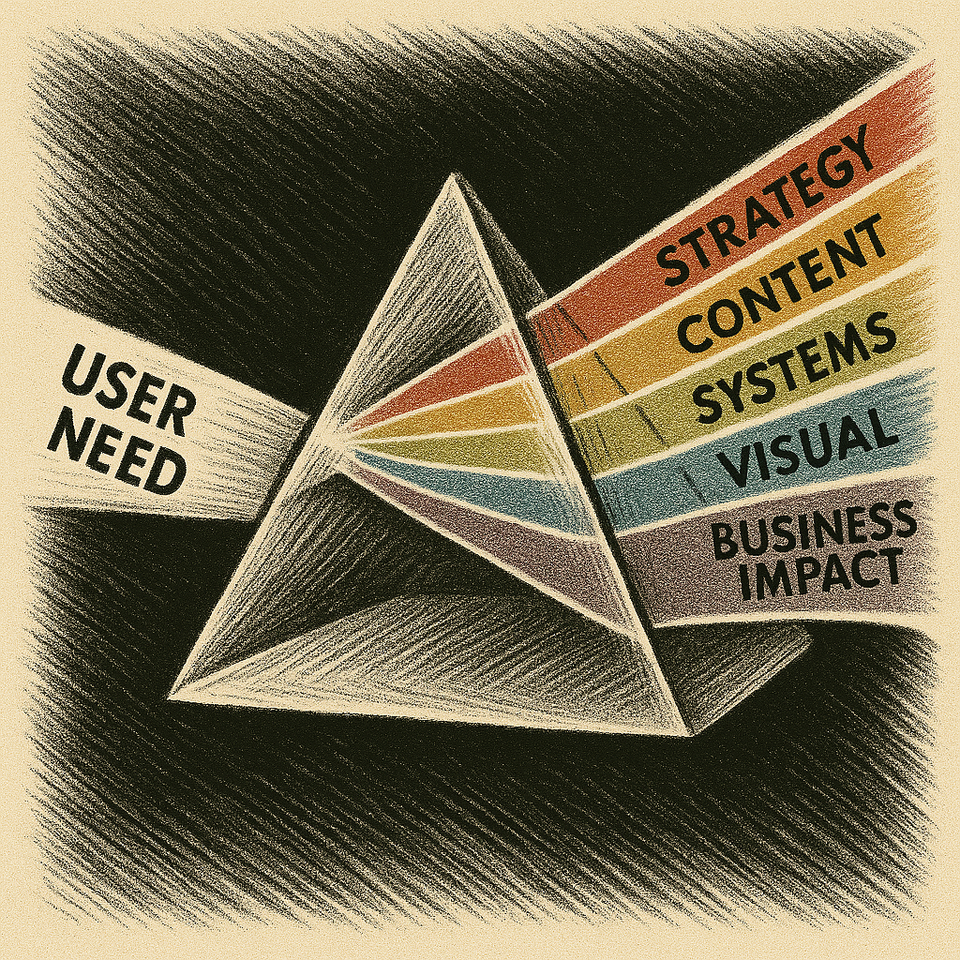What is Design?

Many Designers Wonder Where Their Future Lies
The hiring market for designers, at the time of this writing, is depressed. So depressed, in fact, that the word depressed doesn’t seem to do it justice. Frozen. Non-existent. Near death. The slowdown is tied to a number of factors, including a post-COVID correction in the tech world, a broad pullback in venture funding, and companies finding more efficiencies through the use of AI (or, perhaps, cheaper labor).
As AI continues to break new ground, many designers are beginning to ask questions that would have once seemed unthinkable:
How much of my job will still belong to me? What happens when executives decide AI outputs are "good enough"?
These are valid concerns. The uncomfortable truth is that the industry’s center of gravity is shifting. But that doesn’t mean design is disappearing; it means it’s evolving. There is a future for design and for you within it, but it will require reframing how you think about what design is and what value it offers to an organization.
The Incredible Shrinking Discipline
When I started my career, the term user experience design meant something expansive. We thought of design as the craft of shaping experiences, not just interfaces. It was about understanding how people discovered, adopted, and lived with a product or service. That naturally included interfaces, but also extended to the onboarding process, customer support, marketing, and even how the company communicated with its users when something went wrong.
We were architects of experiences, not just screens. We collaborated with other departments and saw our role as connective tissue, helping to align how the entire organization interacted with its customers.
Over time, UX became a victim of its own success. WAs design gained mainstream recognition—thanks to companies like Apple turning great design into a competitive advantage—many organizations adopted design as a badge of legitimacy rather than a transformational practice. Instead of rethinking how their businesses could operate with design at the center, leadership grafted design onto existing structures. The discipline was squeezed into boxes that fit existing hierarchies:
- Designers became pixel pushers
- Research became an input rather than a driver of strategy
- Design systems became a substitute for design thinking
What could have been a redefinition of how companies create value became, in many cases, a new layer of bureaucracy.
To Continue as Designers, We Must Reframe Design
If we want to continue to survive and thrive as designers, we must return to the original vision for user experience design, a vision that sees design not as an artifact, but as a system of alignment and adaptation.
At its core, design is: